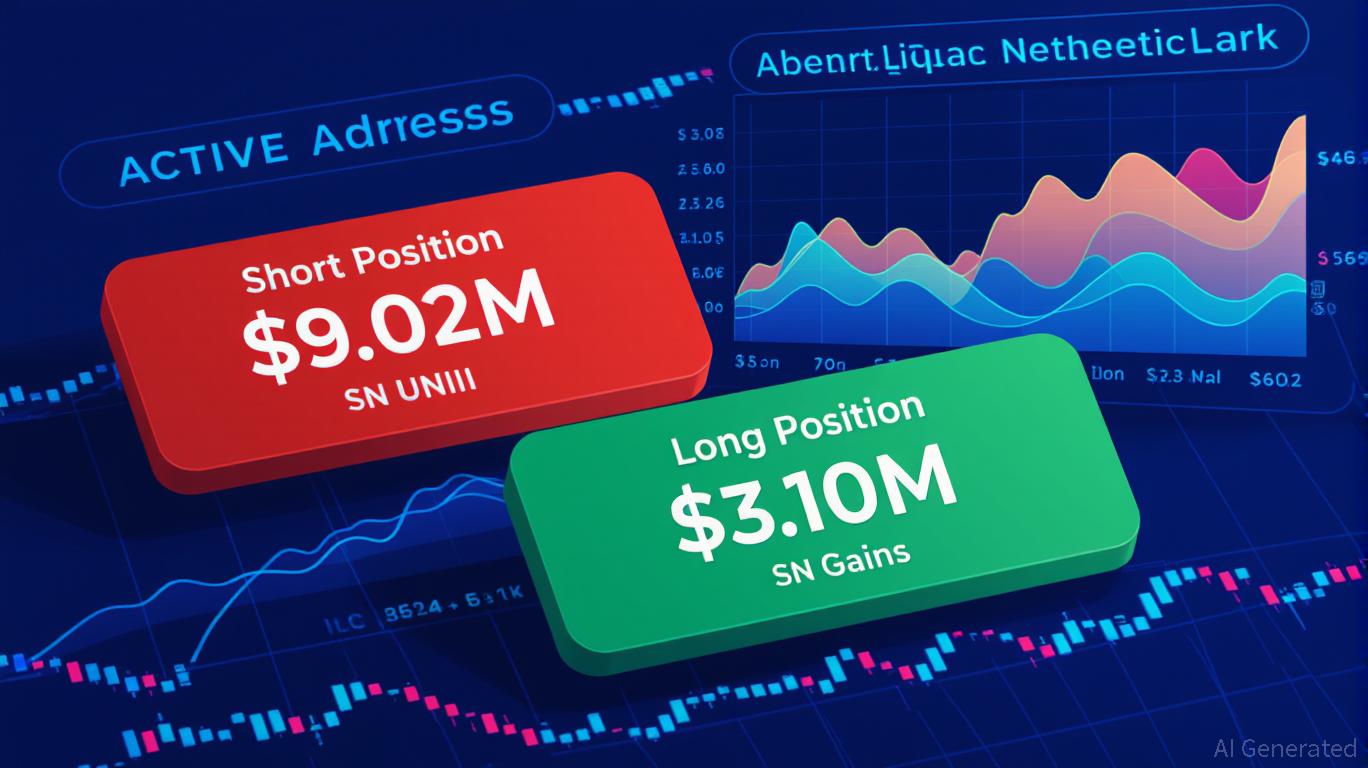TWT's Updated Tokenomics Framework: Driving Sustainable Value and Expanding the DeFi Ecosystem
- Trust Wallet's 2025 TWT tokenomics shift prioritizes utility over governance, using Trust Premium's XP system to drive user engagement and retention. - Strategic integrations like FlexGas (transaction fee payments) and Ondo Finance's RWAs expand TWT's cross-chain utility, bridging DeFi and traditional finance. - TWT's loyalty-driven model reduces circulating supply through locking mechanisms, contrasting inflationary approaches while attracting institutional investors. - Binance's reduced collateral rati
A Utility-Driven Flywheel: TWT as the Engine of Engagement
Trust Premium creates a gamified environment where participants collect Trust XPs by performing on-chain actions such as swapping, staking, and holding digital assets. These experience points unlock progressive rewards (Bronze → Silver → Gold), including reduced gas fees, lower swap charges, and priority access to new features. Central to this system is TWT: owning or locking TWT speeds up XP accumulation and enhances user benefits, as highlighted by
This setup establishes a self-sustaining flywheel. Increased interaction with Trust Wallet’s platform boosts the practical value of TWT holdings, which helps decrease selling pressure and encourages users to stay long-term. Trust Wallet CEO Eowyn Chen describes TWT as "the fuel for a sustainable growth flywheel," directly linked to the platform’s expansion, according to

Strategic Partnerships and Cross-Chain Utility
TWT’s appeal is further enhanced by strategic alliances that broaden its role beyond governance. The introduction of FlexGas in August 2025 enables users to pay transaction fees with TWT, USDT, or
Moreover, Trust Wallet’s partnership with Ondo Finance has introduced real-world assets (RWAs) such as U.S. Treasury bonds to the blockchain, using TWT as a connector between decentralized and traditional finance, as mentioned by
Token Supply Dynamics: A Balancing Act
Although Trust Wallet’s 2025 updates do not provide specific details about TWT’s supply or inflation, the structure suggests an emphasis on supply-side stability. Locking TWT for premium access reduces the available supply, potentially making the token more scarce. This approach differs from tokens like
The lack of clear inflation data for TWT may be intentional, possibly to encourage user participation. Still, the loyalty-based system naturally limits speculative selling by connecting token worth to active involvement in the ecosystem. This strategy reflects a wider industry movement toward prioritizing utility over inflation, as reported by
Challenges and Risks
Despite its advantages, TWT’s framework is not without obstacles. Binance’s decision to lower TWT’s collateral ratio from 60% to 45% could reduce leveraged trading and institutional involvement, as
Conclusion: A Blueprint for Sustainable DeFi Growth
TWT’s revised tokenomics present a bold new vision for how DeFi tokens can foster ecosystem expansion. By focusing on practical use, user participation, and strategic alliances, Trust Wallet is shaping TWT into a versatile asset that connects decentralized and traditional finance. While there are still challenges ahead, the emphasis on building lasting value rather than chasing short-term gains provides a promising model for sustainable growth in the DeFi sector.
Disclaimer: The content of this article solely reflects the author's opinion and does not represent the platform in any capacity. This article is not intended to serve as a reference for making investment decisions.
You may also like
Hyperliquid (HYPE) Price Rally: Increased On-Chain Engagement and Institutional Interest Drive Expansion Prospects
- Hyperliquid's HYPE token surged 32% driven by whale trading and institutional adoption via HIP-3 framework. - Whale activity shows $9M UNI short vs. $3.1M long positions, highlighting platform's speculative role in volatile assets. - Institutional partnerships with RedStone and Felix, plus 21Shares' ETF application, signal growing market confidence. - TVL reached $5B with 73% decentralized trading share, but regulatory gaps and leadership changes pose sustainability risks.

The Growing Fascination with Hyperliquid: Is This the Next Evolution in Cryptocurrency Trading?
- Hyperliquid dominates decentralized trading in 2025 with $303B Q3 volume, 62% perpetual DEX open interest, and $5B TVL growth. - Ecosystem expansion includes HyperEVM (100+ protocols, $2B TVL) and USDH stablecoin (backed by BlackRock , $2.2M trading volume). - Institutional adoption grows via 21Shares' ETF application, but risks include regulatory scrutiny, 16-validator security vulnerabilities, and HYPE token volatility. - Competitors like Aster (near-$30B daily volume) challenge Hyperliquid's dominance

YFI drops 2.95% over 24 hours as market experiences turbulence
- Yearn.finance (YFI) fell 2.95% in 24 hours to $4,851 amid crypto market volatility. - Despite short-term gains (0.96% weekly, 2.52% monthly), YFI has dropped 39.62% over one year. - Traders analyze technical indicators and on-chain data to assess if the dip is a correction or deeper trend. - A backtest evaluates moving averages and volume signals to test strategies for mitigating losses during volatility.
JPMorgan and DBS Highlight Blockchain's Move Toward Real-World International Payments
- JPMorgan and DBS Bank launched a blockchain interoperability framework enabling real-time cross-chain tokenized deposit transfers for institutional clients. - The system connects JPMorgan's Kinexys platform with DBS's Token Services, addressing blockchain network incompatibility to streamline cross-border payments and trade finance. - The initiative aligns with global banks' push for tokenized deposit standards, supported by regulators like Singapore's MAS and potentially influencing future CBDC framewor